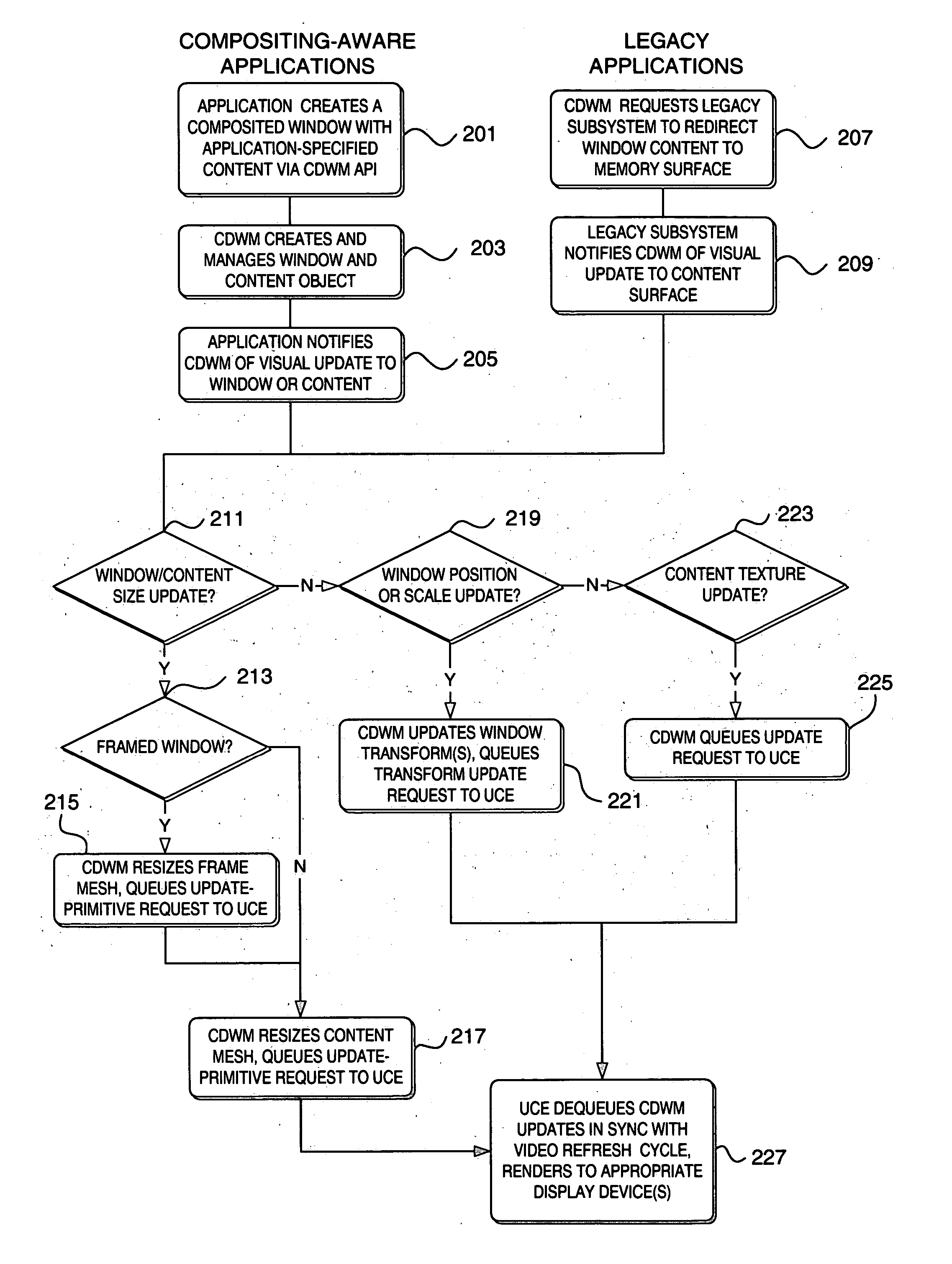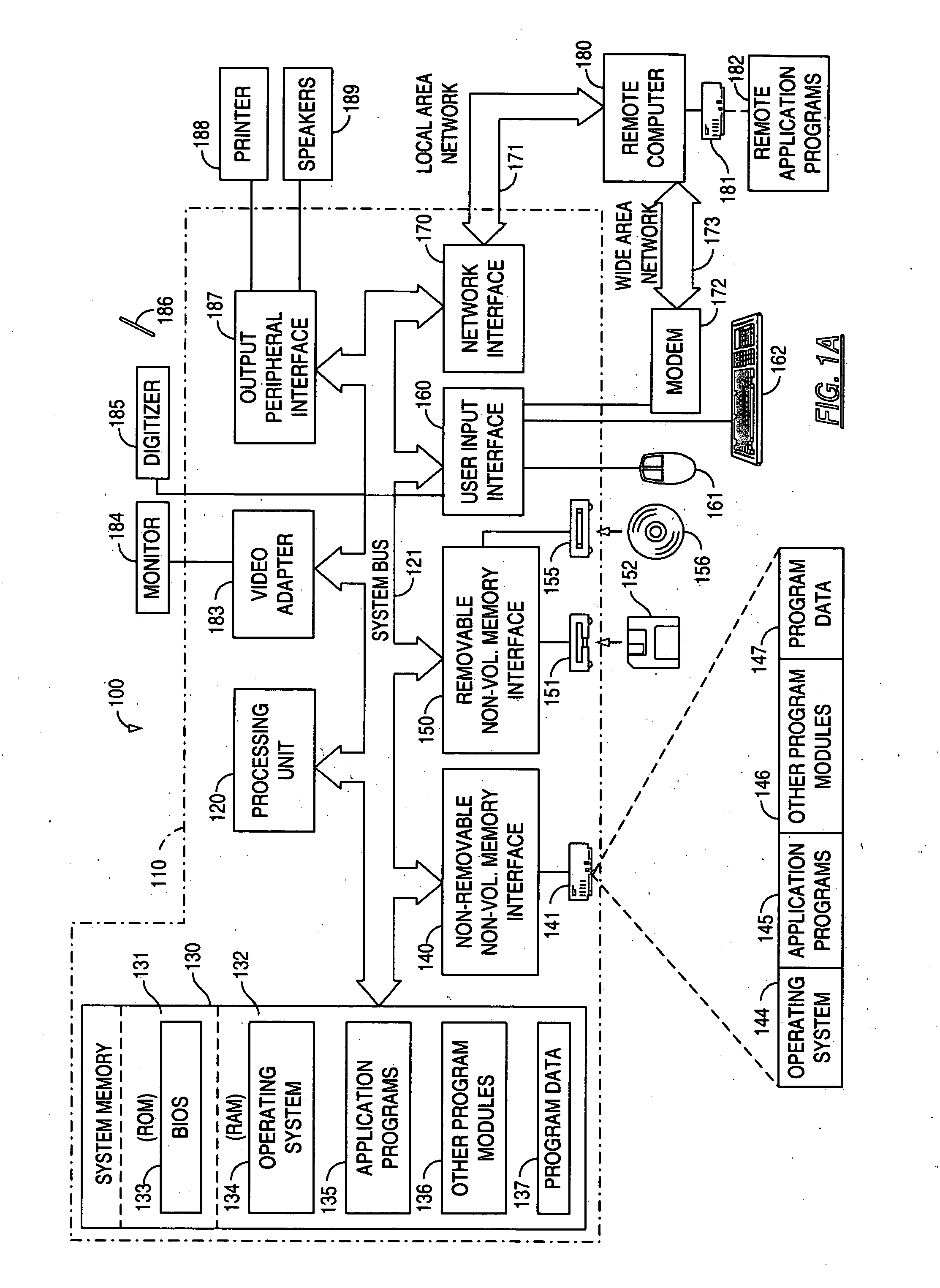Dynamic window anatomy
a dynamic window and anatomy technology, applied in the direction of user interface execution, static indicating devices, instruments, etc., can solve the problems of limited capacity to present visually rich content or exploit enhancements in graphical rendering technology, limiting the potential for graphics hardware-based acceleration, and other features such as transparency, shadows, advanced lighting effects, etc., to achieve the effect of reducing the difficulty of rendering and rendering, and reducing the cost of rendering
- Summary
- Abstract
- Description
- Claims
- Application Information
AI Technical Summary
Benefits of technology
Problems solved by technology
Method used
Image
Examples
Embodiment Construction
[0027] In the following description of the various embodiments, reference is made to the accompanying drawings, which form a part hereof, and in which is shown by way of illustration various embodiments in which the invention may be practiced. It is to be understood that other embodiments may be utilized and structural and functional modifications may be made without departing from the scope and spirit of the present invention.
[0028] The present invention provides a desktop window manager (DWM) that uses desktop compositing as its preferred rendering model. The inventive desktop window manager is referred to herein as a Compositing Desktop Window Manager (CDWM). The CDWM, together with the composition subsystem, referred to as the Unified Compositing Engine (UCE), provides 3D graphics and animation, shadows, transparency, advanced lighting techniques and other rich visual features on the desktop. The compositing rendering model used herein intrinsically eliminates the invalidation ...
PUM
 Login to View More
Login to View More Abstract
Description
Claims
Application Information
 Login to View More
Login to View More - R&D
- Intellectual Property
- Life Sciences
- Materials
- Tech Scout
- Unparalleled Data Quality
- Higher Quality Content
- 60% Fewer Hallucinations
Browse by: Latest US Patents, China's latest patents, Technical Efficacy Thesaurus, Application Domain, Technology Topic, Popular Technical Reports.
© 2025 PatSnap. All rights reserved.Legal|Privacy policy|Modern Slavery Act Transparency Statement|Sitemap|About US| Contact US: help@patsnap.com



